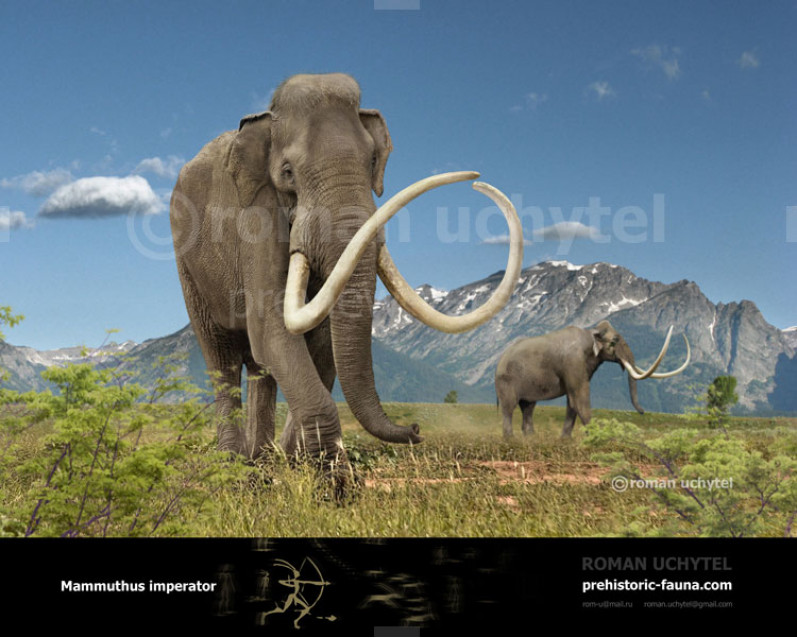Imperial mammoth
240240Imperial mammoth (Mammuthus imperator Leidy, 1858)
Order: Proboscidea
Family: Elephantidae
Dimensions: length - 6,5 m, height - 4,9 m, weight - 11 000 kg
Expansion: Pliocene through to the end of the Pleistocene (endemic to North America)
The imperial mammoth is one of the largest known mammoth species in the fossil record, and possibly not only the largest mammoth but the largest terrestrial mammal currently known from North America. The imperial mammoth is still eclipsed in terms of size by some other mammoths; however the exact species is not uncertain. Previously the record holder went to Mammuthus sungari, but new analysis of these remains in 2010 has since led to the idea that the largest remains of Mammuthus sungari should be moved over to Mammuthus trogontherii, better known as the steppe mammoth, making this the largest species.
The imperial mammoth is usually associated with finds within the United States of America, but remains are also known from as far as Southern Mexico and Canada. As such the imperial mammoth covered a broad geographical range much like its counterpart the Columbian mammoth (Mammuthus columbi). These two species are often confused with one another due to their similar forms, but the imperial mammoth can be identified from its tusks, the tips of which cross over one another. The imperial mammoth does seem to have suffered the same fate as the Columbian mammoth however by succumbing to the combined effects of climate change and human hunting.
Imperial mammoth (Mammuthus imperator Leidy, 1858)
Order: Proboscidea
Family: Elephantidae
Dimensions: length - 6,5 m, height - 4,9 m, weight - 11 000 kg
Expansion: Pliocene through to the end of the Pleistocene (endemic to North America)
The imperial mammoth is one of the largest known mammoth species in the fossil record, and possibly not only the largest mammoth but the largest terrestrial mammal currently known from North America. The imperial mammoth is still eclipsed in terms of size by some other mammoths; however the exact species is not uncertain. Previously the record holder went to Mammuthus sungari, but new analysis of these remains in 2010 has since led to the idea that the largest remains of Mammuthus sungari should be moved over to Mammuthus trogontherii, better known as the steppe mammoth, making this the largest species.
The imperial mammoth is usually associated with finds within the United States of America, but remains are also known from as far as Southern Mexico and Canada. As such the imperial mammoth covered a broad geographical range much like its counterpart the Columbian mammoth (Mammuthus columbi). These two species are often confused with one another due to their similar forms, but the imperial mammoth can be identified from its tusks, the tips of which cross over one another. The imperial mammoth does seem to have suffered the same fate as the Columbian mammoth however by succumbing to the combined effects of climate change and human hunting.


-346x277.jpg)
-346x277.jpg)